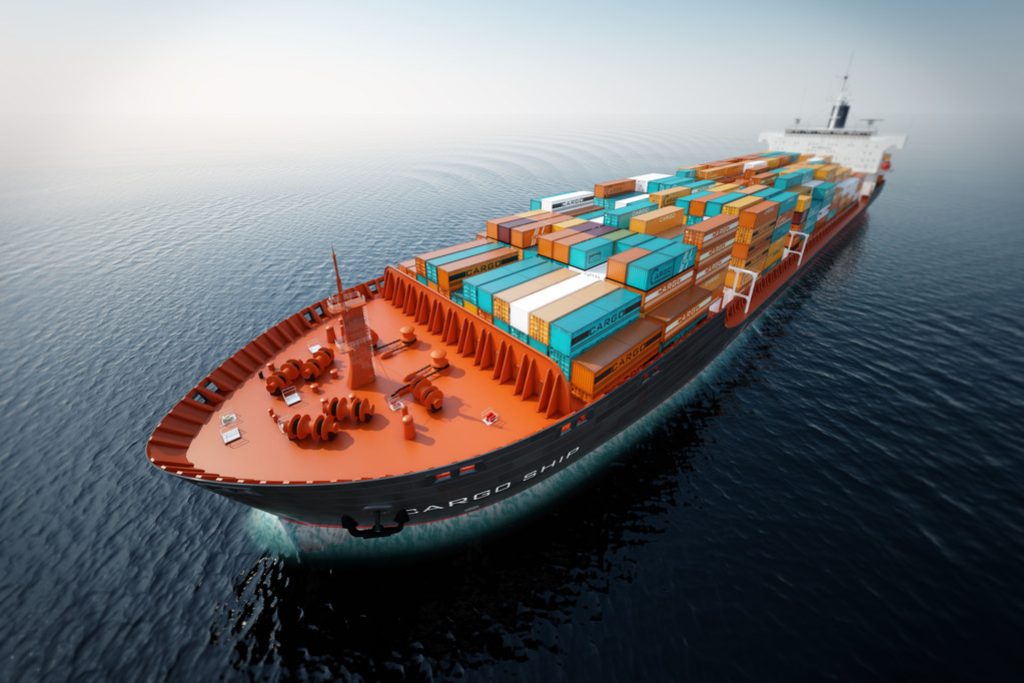Sea transportation services

The types of cargo in sea transportation can be divided into several different categories, which are explained below.
1. Deep Sea Transportation: This type of Ham
Transportation means intercontinental transportation by crossing oceans. In this transportation, large ships are used and long distances are covered. It is usually used to transport goods such as iron ore, oil, cement and fertilizer.
2. Short sea shipping (coastal shipping): In contrast to deep sea shipping, this type of shipping is done over relatively short distances. The vessels used in this type of transportation are much smaller than deep vessels and sometimes travel inland. They definitely don’t cross the ocean, but move along the coast and other waters. Short sea shipping is also usually used to transport goods, but their volume is smaller and has a different freight rate.
3. Inland transportation: This type of transportation means using inland waterways for transportation by ships. Inland waterways include rivers, canals and lakes. The volume of inland shipping is less than that of short sea shipping and ships are designed to pass through inland waterways. Products such as petroleum products, mines and chemical products can be transported by the internal waterways of the country.
Usually, the approximate shipping time of goods by sea method is between 30 to 35 days. This period of time when goods need to be transferred from one country to another is used in sea transportation. This time may be longer than other shipping methods, such as air freight.
What is OBL?
OBL or “Ocean Bill of Lading” is an acronym that refers to a sea bill of lading. A sea waybill is a legal document that is issued to transport goods by sea. OBL has two types:
Bill of lading for transit: This type of bill of lading is issued for transporting goods from one origin to the final destination without changing the route and stopping in between. In this case, the goods are transported directly from the origin to the destination and are not changed during the distribution route.
Bill of lading for shipping lines: This type of bill of lading is issued to transport goods using specific shipping lines. In this case, the ships belonging to a particular shipping line transport the goods from the origin to the destination, and the bill of lading is related to these shipping lines.
The Ocean Bill of Lading (OBL) is the most important document in sea transportation and includes the specifications of goods, terms of transportation, origin and destination, shipping lines and payment terms.

bulk cargo
The term “bulk cargo” (BULK) means the transportation of shipments that are loaded on a ship without any type of packaging and without the use of containers. In this type of transportation, the goods are loaded onto the ship in raw form, without special packaging or division, as bulk cargo. Some examples of bulk cargo include grain, iron ore, cement, sugar, mineral salts, phosphates, coal and other similar materials. This type of bulk cargo is dumped directly in the loading and unloading halls of ships with the help of special equipment, and unlike packaged cargo such as cartons or containers, they do not need to be packed separately.

The amount of cargo transported
The volume of sea and ocean freight is generally very large. Below are some basic facts about the size and scale of this industry:
About 90% of all goods are transported using sea and ocean transportation.
Around the world there are about 55,000 ships engaged in maritime transport.
Approximately 1.5 million people worldwide are employed in the shipping industry.
Greece, Germany and Japan have the largest international shipping fleets.
The largest ocean freighter is capable of carrying around 18,000 containers.
Without sea transportation, the transportation of many raw materials would not be possible, and this area plays an essential role in the pricing of final products.
One of the biggest risks in the shipping industry is piracy. However, shipping by sea or ocean is still considered the safest method of global transportation.
